Trent Jansen reflects on the secret behind his design excellence ahead of his two-decade retrospective
As the Melbourne Design Week celebrates two decades of his internationally recognised work, the Australian designer is further resolved in his design ethos.

Trent Jansen has no interest in compromise.
The Australian designer, who has amassed a significant following for his intricate pieces which serve as fine art more than functional furniture, is committed to perfection in each of his collections. Jansen’s ornately designed and uniquely singular pieces of furniture brim with life – a timber armchair turns into a folkloric creature when draped in Tasmanian wallaby pelt, a Scandinavian leather lounge is moulded to resemble changing weather patterns in the Kimberley region, a leather and aluminium bench looks like liquid in motion. His strict practice may be antithetical to the growing demands of modern day buyers, but still Jansen holds firm to his principles over a two-decade-long career.
“I want every piece to be perfectly considered and beautifully made. There’s no corner cutting and I don’t work with companies where that’s not part of their ethos. I just won’t do it,” he says.

It was a lesson learnt early in Jansen’s career when he took on a two-year internship in Amsterdam with acclaimed designer Marcel Wanders at Moooi Studio.
“He set me on this trajectory of wanting to be an object designer; someone who makes things that exist in the grey area between art, design and storytelling.”
On his return to Australia, Jansen, who studied design at the University of New South Wales and received his PhD from the University of Wollongong, turned to a philosophy of design anthropology. This practice is founded on the theory that designers should look beyond functionality to ensure their designs are culturally relevant to society’s needs.
“This line of work is inherently political. I can’t do my job by ignoring a huge blind spot,” says Jansen. “Contemporary Australia needs to do a better job of reconciling the richness of ancient culture with its modern manifestations.”
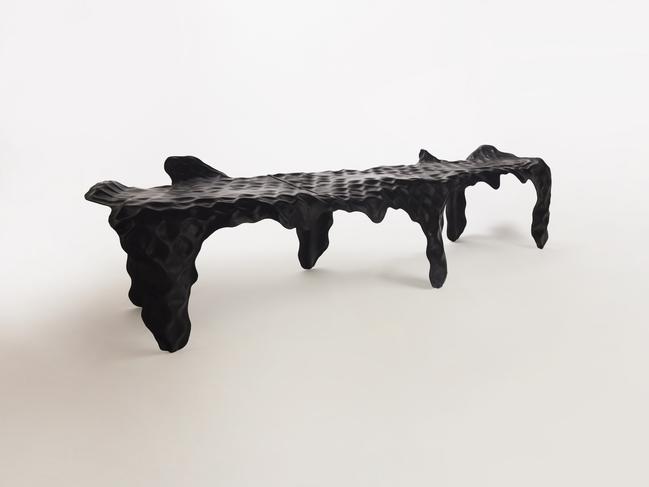

Broached Commissions, a Melbourne-based design gallery co-founded by Jansen in 2010, pushed him to meaningfully put his philosophy to the test; he began researching how industrialisation impacted Indigenous communities and changed the course of Australia’s history. Jansen ramped up collaborative projects with Indigenous creatives to present “complex stories that were specifically about Australia”.
“It really shifted the way I was conveying my politics through my work – both when it came to sustainability and reconciliation. I wanted these projects and stories to physically embody reconciliation,” says Jansen.
In line with this ethos, he reveals his next project is a collaboration with Nyikina artist and designer Johnny Nargoodah, whose art is held in the National Gallery of Victoria’s collection. The joint effort has been in development for two years, but marks the second of an ongoing relationship between the pair, who previously produced Partu | Skin together in 2020. Their upcoming project is on track to exhibit at Design Miami this December.
“It’s not just about making work together, it’s really about forging a connection that lasts. I try to make sure there’s a real symmetry in the way my creative relationships unfold. [Designer and artist] Bernadette Hardy, who is a close friend of mine, calls it ‘moving at the speed of trust’. We’re slow but we do things properly.”
This devotion to a careful and considered craft is also reflected in Jansen’s desire for a slower-paced personal life. While having previously lived in Sydney, Amsterdam and, briefly, Alice Springs, the Kiama-raised designer now resides slightly further north in the coastal town of Thirroul with his partner, Amy, and their daughter. Though Jansen believed he would never leave Sydney once he had settled there for his career, his homecoming has brought him closer to family and nature.
“Not even Sydney is the epicentre of the design world. Miami, New York, LA, that’s where all the money is. But I’m just not willing to give up the lifestyle I have,” Jansen says.
“We have a good life here; a quiet existence by the beach. My studio is a big shed in the backyard. Our daughter loves it too, she’s at an age where she thinks Thirroul is the centre of the universe,” he says.
Has this stifled his ability to develop his practice?
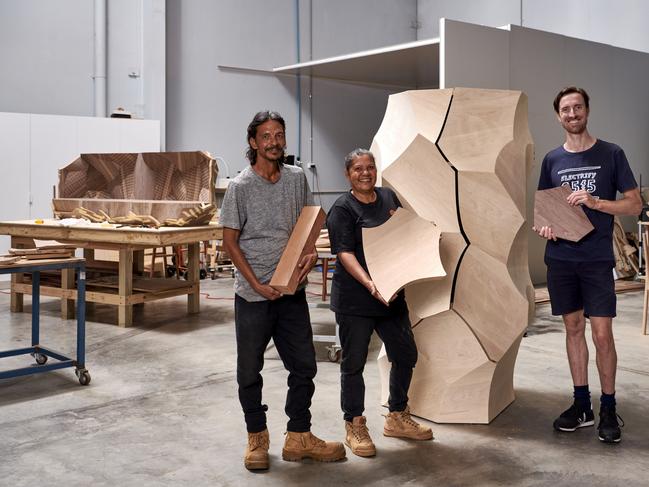
“In many ways, the isolation I have [living regionally] gives me creative freedom,” he says, “It gives me some hope of doing something not too heavily influenced by what’s going on in the rest of the world.”
Jansen has worked quietly to cement himself as one of Australia’s leading designers. His career will be celebrated with a 20 year retrospective at Melbourne Design Week next month. The exhibition, which will show at Collingwood gallery Useful Objects, runs alongside shows from other industry leaders like lighting designer Volker Haug and Melbourne-based design studio Coco Flip.
Design Week curator Timothy Moore views Jansen as critical to the Australian design scene.
“Trent is at the forefront of Australian design because his work is contextually and culturally specific to what it means to live on this continent – right here, right now – by narrating the rich multi-layered ancient history of this place,” he says.
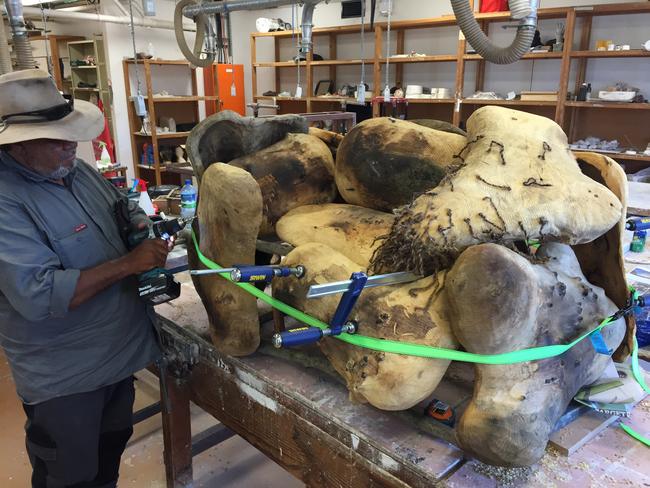
Moore points to four of Jansen’s works, including Briggs Family tea service – a porcelain and copper tea set is covered in native materials like wallaby pelt and bull kelp to symbolise the merging of Indigenous and English cultures during colonisation – from his highly lauded Broached Commissions collection, having been acquired by the National Gallery of Victoria as an indicator of his impact.

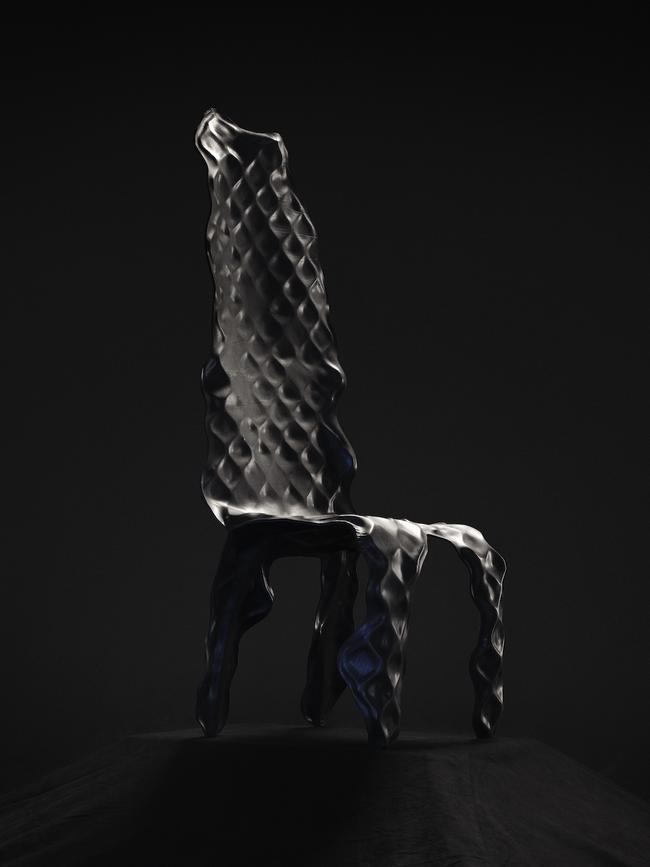
One edition of the Briggs Family tea service will be loaned to Useful Objects for the survey alongside some of Jansen’s earliest works as well as his most recent collaborations with Minya Anangu creative Tanya Singer and her husband Errol Evans, who hails from Djabugay and Western Yalanji Country in Far North Queensland. The husband-wife carving team, who live and work at Railway Bore in the remote north of South Australia, invited Jansen to camp in their front yard to learn more about their culture and community at the start of what would become their shared Kurunpa Kunpu collection three years later. The final collection includes geometric coffee tables and cabinets, and distorted wooden chairs, heavily featuring leaves of wood that resemble dry earth when it cracks under the forces of man-made changes in climate.
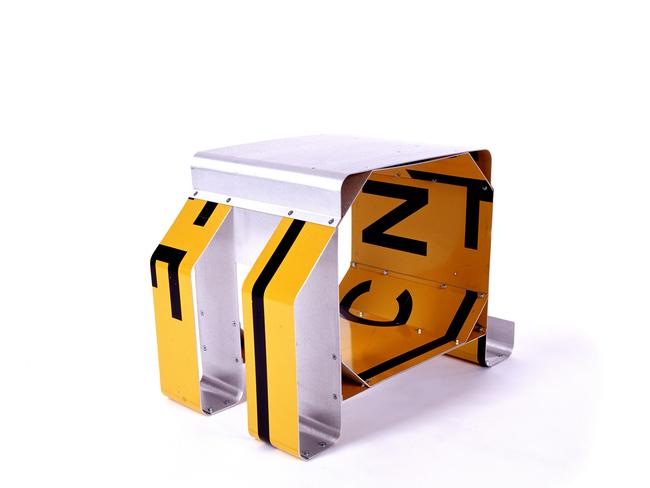
Pieces from Kurunpa Kunpu have since shown at London Design Festival and Design Miami, two of the most highly regarded events on the design calendar. Jansen has exhibited at both before.
This latest series is not the only instance of Jansen having found admirers abroad.
In 2022, he was selected for a month-long residency at the Venice Design Biennale. In Milan at the Salone de Mobile – the largest annual international furniture fair – Jansen has consistently been represented by leading contemporary design gallerist Rossana Orlandi.
Jansen says he is energised by the opportunity to travel with his collaborators and platform their stories away from home soil.
“Sometimes Australia is seen as being in the backwaters on the international design stage – no one is looking at us to produce the next big thing,” he says, “But the best designers come from the most unexpected places. More and more, the industry is looking toward the margins for interesting designs.”
This year’s Design Week also looks toward innovative collections of work with a theme of ‘designing the world you want’. Useful Objects gallery director Simon Maidment describes Jansen’s approach as “shaping the culture we want”.
“There is something embodied in Trent’s practice. When he engages with the issue of sustainability, he isn’t just talking about those things but manifesting them through his practice as well as in the final object,” says Maidment.

When Maidment opened Useful Objects almost two years ago, Jansen was the first person he phoned to include in his maiden exhibition for Melbourne Design Week.
“I began following his process [more than 10 years ago] as an exemplar of how to work collaboratively with other [artist and designer] voices … it’s almost like he and his collaborators are storytelling” says Maidment. “His pieces are so close to art because of their approach to narrative and the imaginary.”
“Within Trent’s work you’ll find a sense of optimism – of hope – in his provocations about sustainability. It really grounds what he makes in the here and now.”
Jansen now finds himself in the prime of his career.
“It does feel like a really long time because I’ve done so many nonlinear projects and spent time in many places. There are great learnings that come from not following a singular trajectory,” says Jansen. “If anything, 20 years of experience has made me feel really energised.”
Melbourne Design Week runs from May 15 to 25. Trent Jansen: Two Decades of Design Anthropology will be presented at Useful Objects Gallery.





To join the conversation, please log in. Don't have an account? Register
Join the conversation, you are commenting as Logout